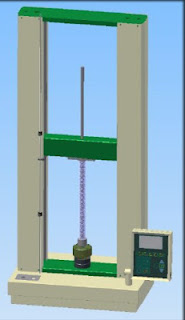Testing Wet Tensile Strength of Absorbent Paper

On the way of innovation, Tinius Olsen now uses its Tensile Testing Machine to put up a test to measure the wet tensile strength and performance of tissue and absorbent paper. Wet tensile strength is the maximum force supported by the unit width of a wet test piece of tissue/absorbent paper until the onset of rupture using a tensile test. EN 12625 defines th e preparation of the test specimen in terms of the edge quality and dimensional tolerances . The test specimen is placed into a Tinius Olsen tensile testing machine upper clamp so that a loop is produced around what is called the “Finch” soaking device bar; the soaking vessel containing water is raised allowing soaking for 15 seconds, the tensile force is then applied & once the specimen ruptures, the soaking vessel is removed. Results are automatically reported through Horizon test software in terms of Mean wet tensile strength (N/m) & Relative wet tensile strength (%) which qualifies the strength &...


